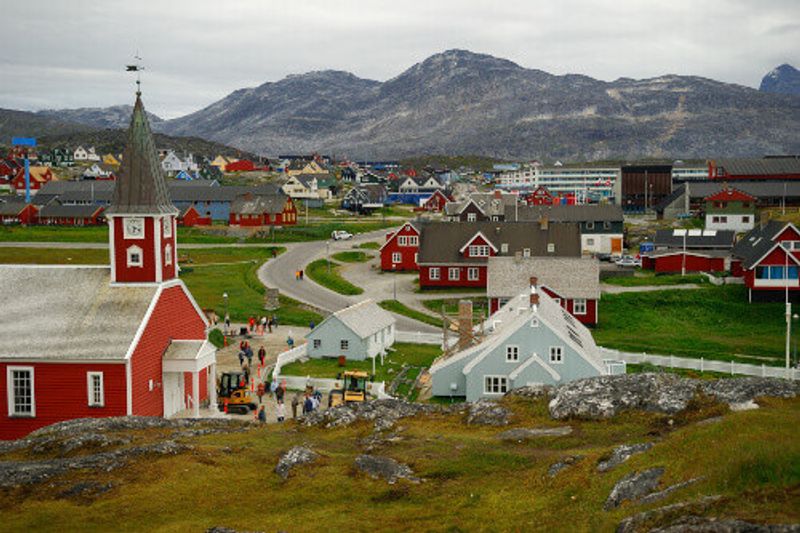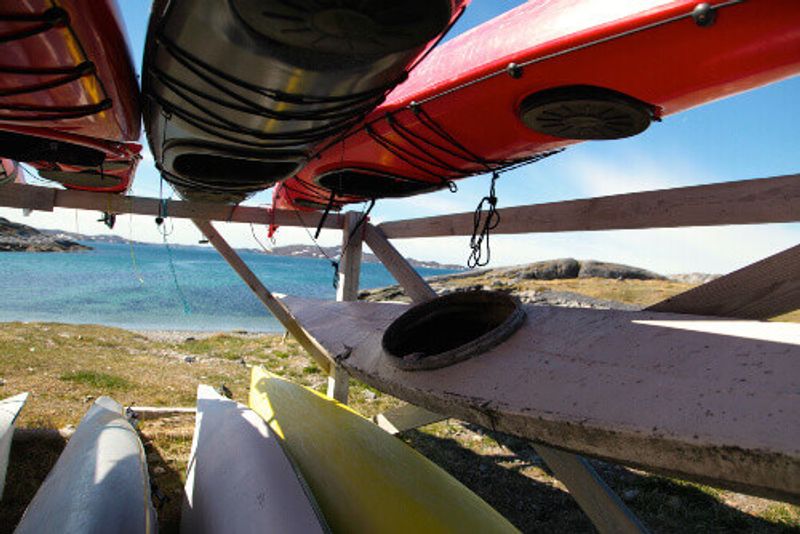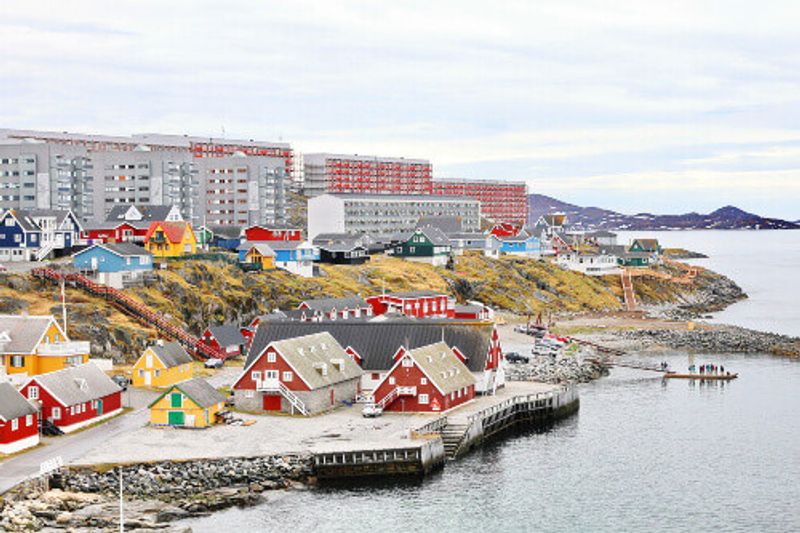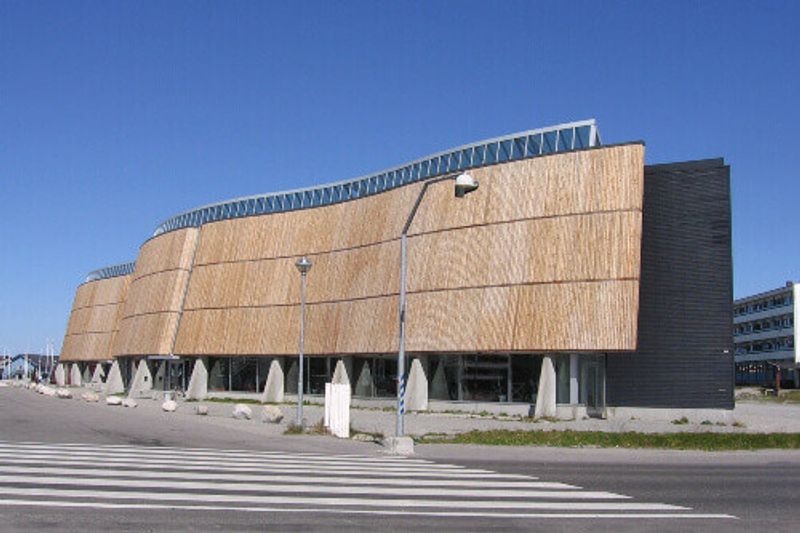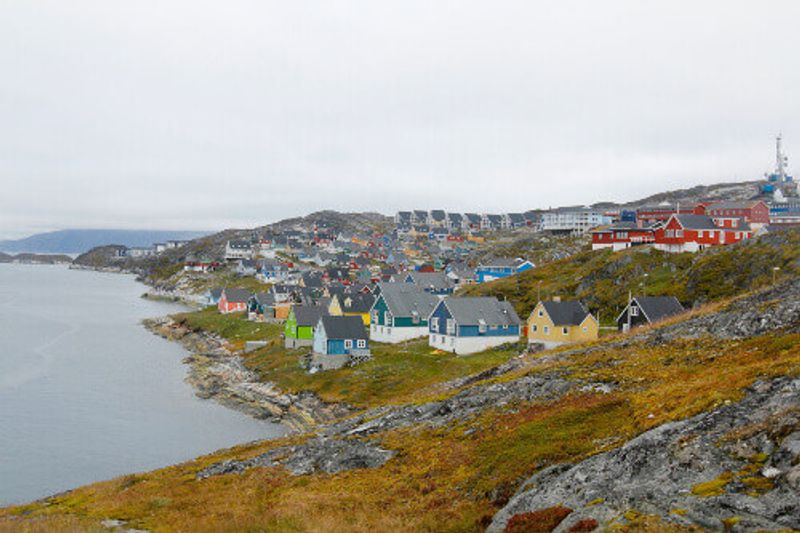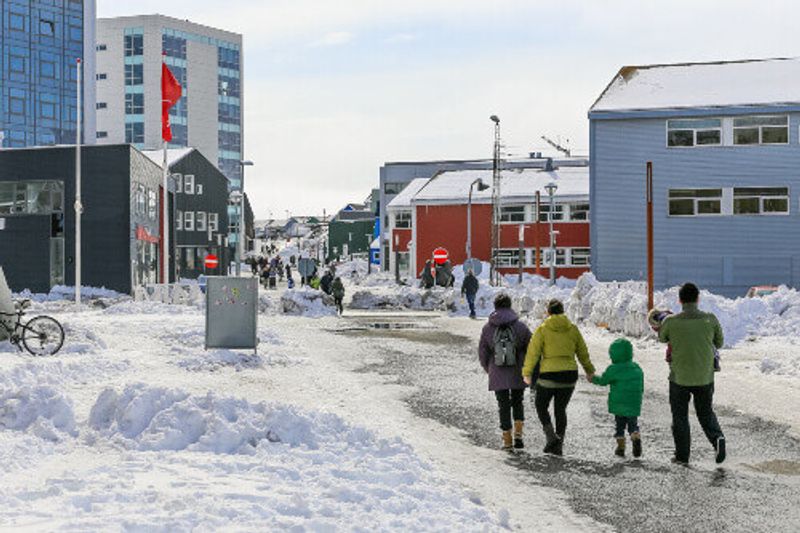Thanks to a recent revival, Greenland’s capital is shedding its image as an industrial centre to become a Nordic cultural capital
In the past, visitors have bypassed the country’s capital in favour of the natural glaciers and ice fields further north. But sitting below beautiful mountain peaks, at the mouth of one of most impressive fjord systems in the world, the city should certainly not be ignored. A revival in recent years that has seen the impressive new architecture, gourmet restaurants and an emerging art and fashion scene.
Nuuk was first settled in 1721 by Danish missionary Hans Egede, and today his statue still looks out across from above the old Colonial Harbour. Brightly coloured fish factories and old industrial buildings are painted in vivid Scandinavian colours that leap out from the white, wintery backdrop. And standing proudly over the city is the red and white Lutheran Nuuk Cathedral that dates back to 1849.
The Greenland National Museum housed in an old 1930s warehouse building on the waterfront, tells Greenland’s 4,500 years of history, Inuit culture, and the social changes that occurred as the city grew in the 1950s. It also houses the Mummies of Qilakitsoq. Three mummified women and a six-month-old child from the 15th century who are spookily well-preserved, still wearing their intricately embroidered jacket and boots they died in all those hundreds of years ago.
The nearby Katuaq Culture Centre is the city’s most impressive example of modern architecture. Designed to look like the flowing waves of the Northern Lights, it’s golden wooden waves represent the lights, while the bulk of the building represents the tall blocks of ice seen so frequently around the country.
The city has become an art hub in recent years and impressive street art and sculptures can be seen dotted throughout the town along an art walk, specifically created by the Nuuk Kunstmuseum (Art Museum). Both inside the outside of the museum works can be found by local and international artists that show the history of the Inuit people and depict many of the legends and myths of Greenland. A podcast can be downloaded from the museum that allow visitors to wander through the town and find all the hidden artistic gems. Nuuk was known for the large and often ugly 1960s apartment blocks that dotted the city but today, many have been demolished and those that remain have become canvasses for street artists with the Polar Bear and the Woman painted on apartment block 10, a must-see.
People might not think of Greenland as a shopping mecca and admittedly options are limited but a small handful of boutique fashion brands are opening shops in the capital. One such boutique is Qiviu who use natural fibres from the local musk ox to produce wool products for the export market. Nuuk Couture is another local brand who produce Greenland-inspired fashion items.
A number of gourmet restaurants have opened in Nuuk showcasing the quality and diversity of Nordic Cuisine. Seafood and snow crab can be found on many menus but other Inuit dishes such as musk-ox burgers or musk-ox tartar are also found. Sarfalik is great for fine dining whereas the café at the Culture Centre has more casual dining options.
The pedestrianised Imaneq Street is the place to go for an evening tipple. Plenty of cosy bars and log-cabin style pubs line the street where people sit around roaring fires whilst warming their cockles. The brewery Godthaab Bryghus is the place for beer-lovers to try locally made beers and see the whole beer making process in action. In the evenings they often have live music performances and the beerhouse becomes one of the centre points of the city’s nightlife.
